Images from the Otago Space Physics Group, at Home and Overseas (2020-2021). Current images are also available.
| Otago Space Physics Expedition 13 standing in front of the new magnetic field antenna they installed at Arrival Heights, Antarctica. Expedition 13 was made up of Craig Rodger, James Brundell, and PhD student Daniel Mac Manus. During their time in Antarctica Expedition 13 moved the WWLLN electric field VLF antenna near Scott Base and installed this additional AARDDVARK VLF magnetic field antenna. They also calibrated the existing VLF magnetic field AARDDVARK antenna at Arrival Heights. There is more information on the webpage describing Expedition 13’s goals, and the predeparture isolation [3 December 2021]. | 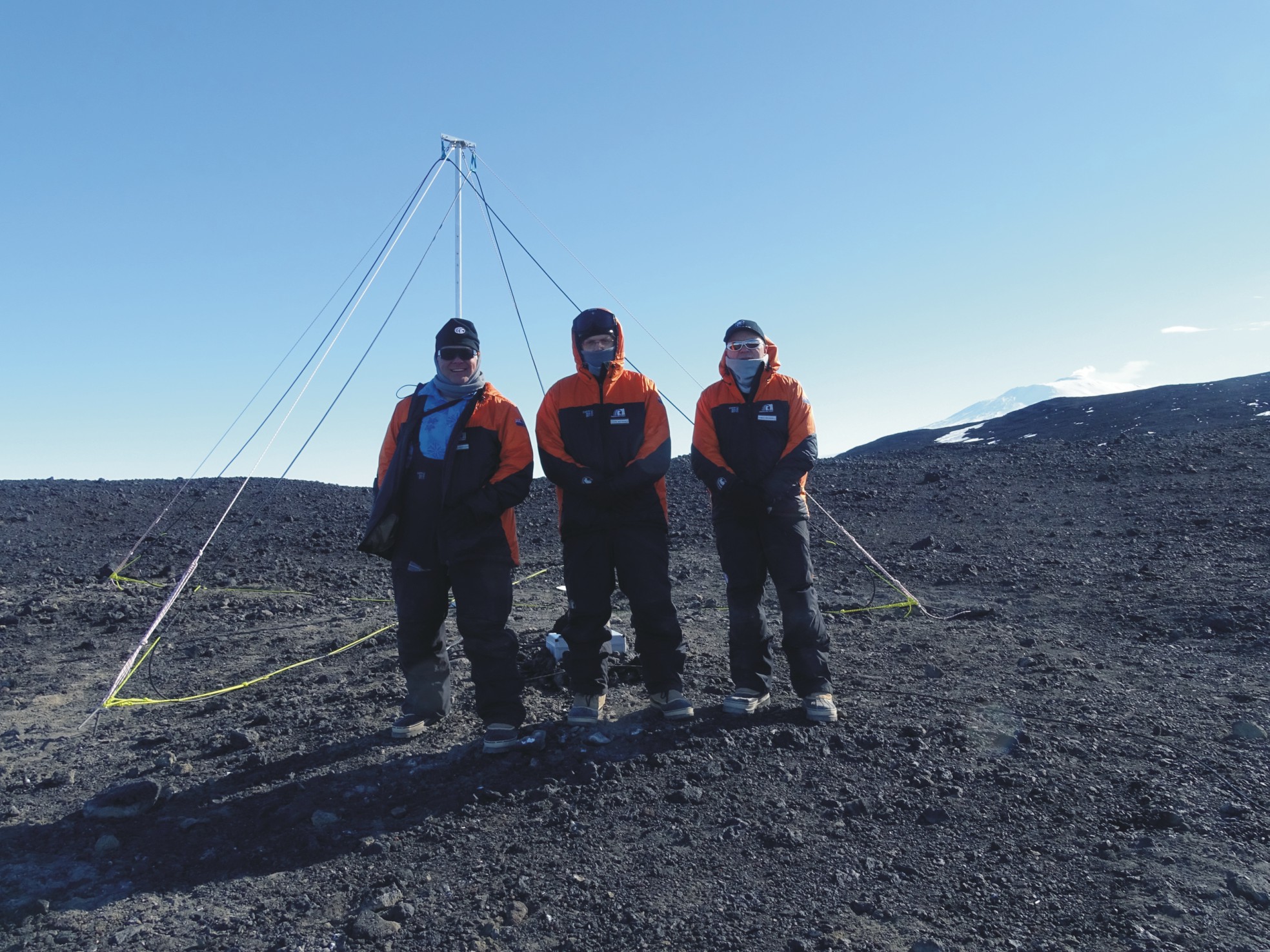 |
| In mid-late November 2021 Otago Space Physics Expedition 13 prepared to travel to Scott Base in Antarctica. Before they could go south they needed to spend 14 days in an isolation facility in Methven. At the end of the 14 days the team could remove their masks inside. This image shows the 3-person team on day 14, the day before they were scheduled to travel South to Scott Base (although due to the weather the flight actually leave 3 days late). Expedition 13 was made up of Craig Rodger, James Brundell, and PhD student Daniel Mac Manus. There is more information on the webpage describing Expedition 13’s goals, and the predeparture isolation [22 November 2021]. | 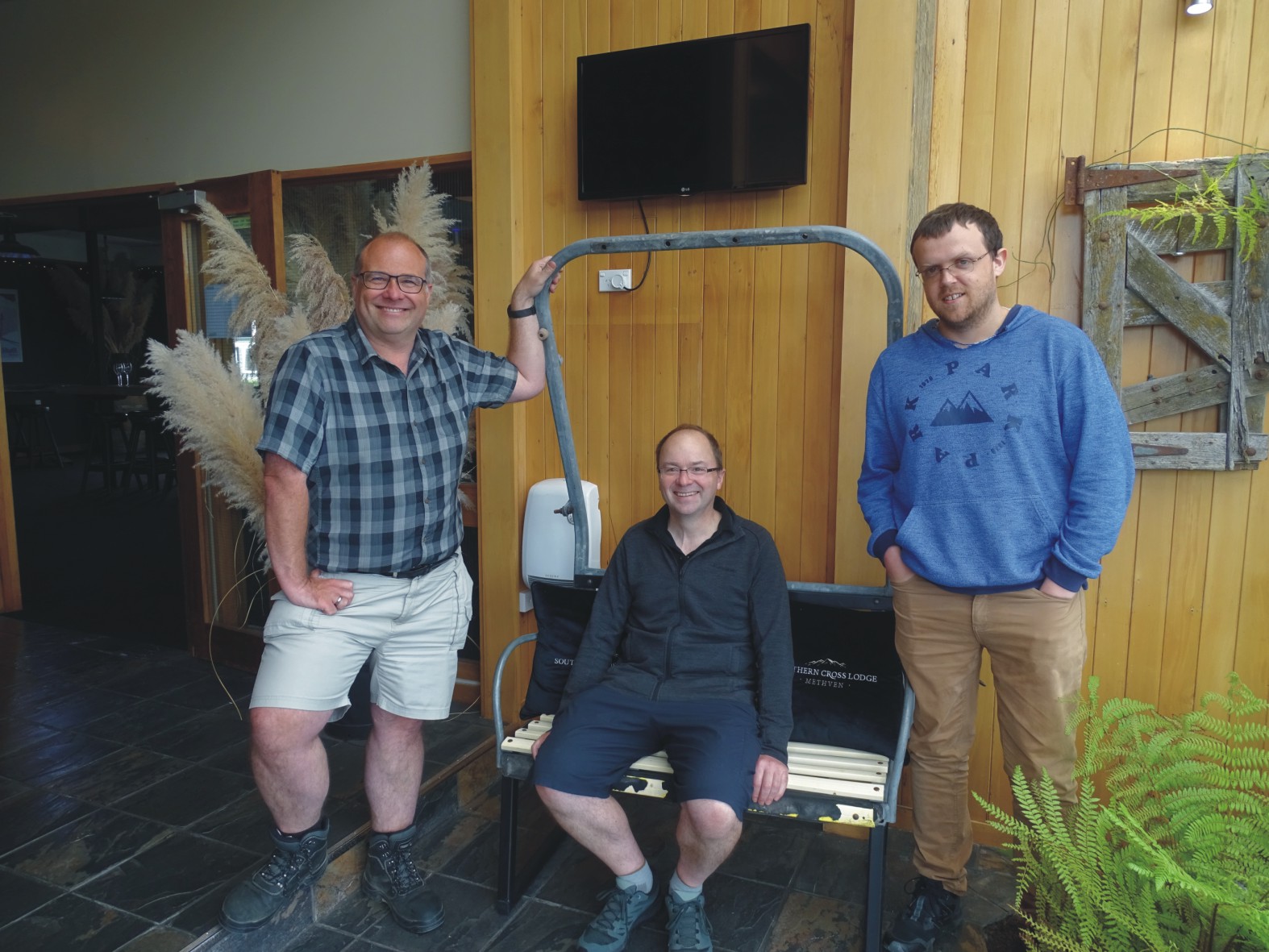 |
| Craig Rodger and Anna Tarr at the Awarua Satellite Ground Station facility, owned and operated by Space Operations New Zealand. They agreed to host a magnetic field monitoring instrument, a magnetic variometer, as part of our Solar Tsunamis research programme. The variometer was deployed in mid-October, which involved us travelling south to Awarua and installing the instrument. The variometer was buried underground to provide better thermal and mechanical stability; Craig and Anna did most of the digging, hence this picture by “their” hole. At the same time Aaron and James were deploying the electronics and cabling. By the end of the day the instrument was already logging data [11 October 2021]. | 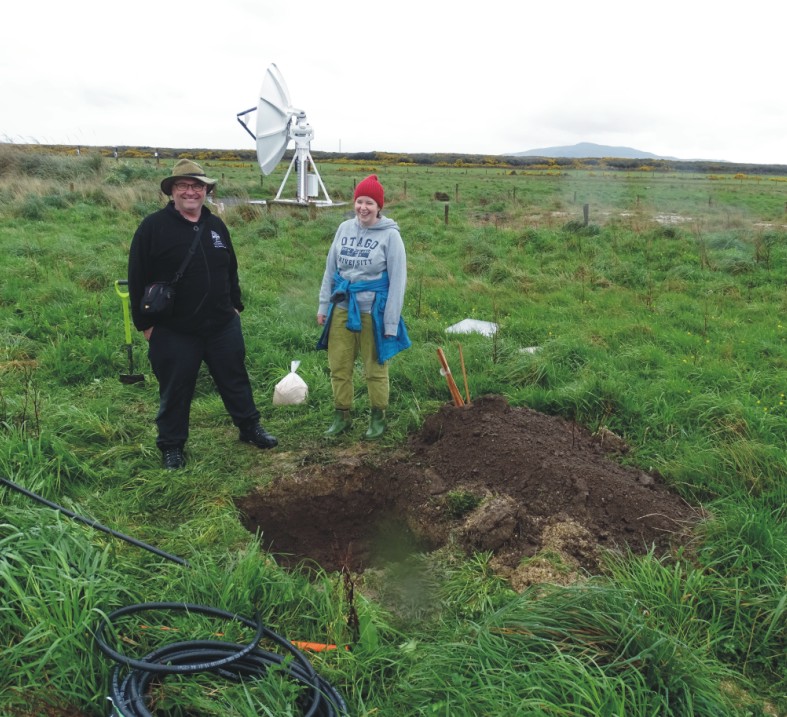 |
| The 2nd of September 2021 marked the 162nd anniversary of the Carrington Event causing intense aurora across the skies of New Zealand. To mark the anniversary our Otago Museum partners in the MBIE Endeavour funded Solar Tsunamis research programme launched our new programme logo. Otago Museum ran a competition across all the kura in New Zealand. The winning creation was made by Maikel Terekia, a 13-year-old from Te Kura Kaupapa Māori o Horouta Wānanga in Gisborne. Mahi whakamiharo Maikel, Kia Ora! | 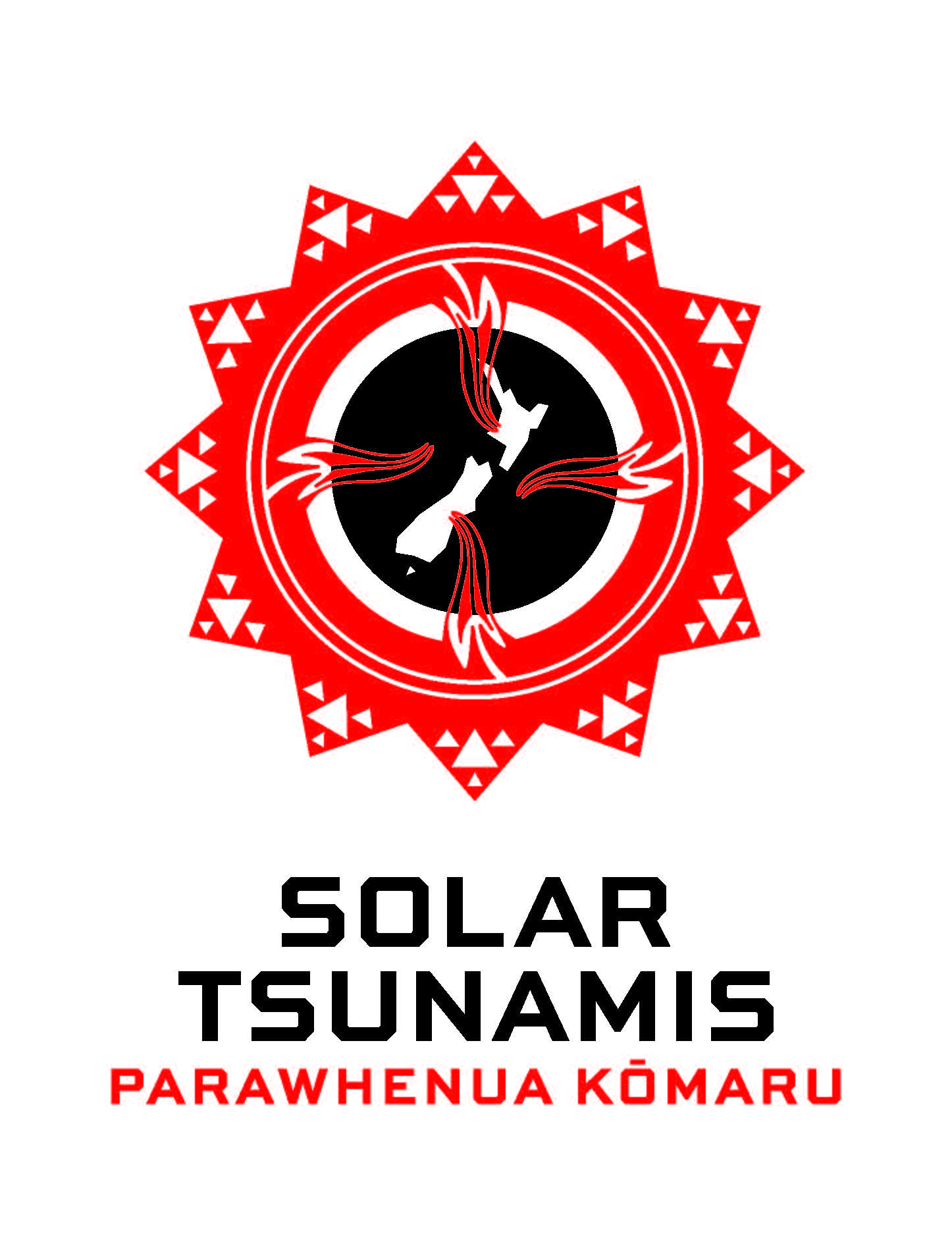 |
| In August-September 2021 the 33rd General Assembly of the International Union of Radio Science was held as a hybrid meeting, online and in Rome (Italy). The meeting was original to be in-person in Rome in August 2020, but was delayed a year due to COVID-19. Craig attended at the New Zealand URSI delegate, gave two oral presentations, chaired two sessions, and was also elected the vice-chair of Commission H. This image shows him answering questions at the end of his talk on radiation belt dynamics (past midnight, early of the morning of Wednesday 1 September 2021, NZ time). | 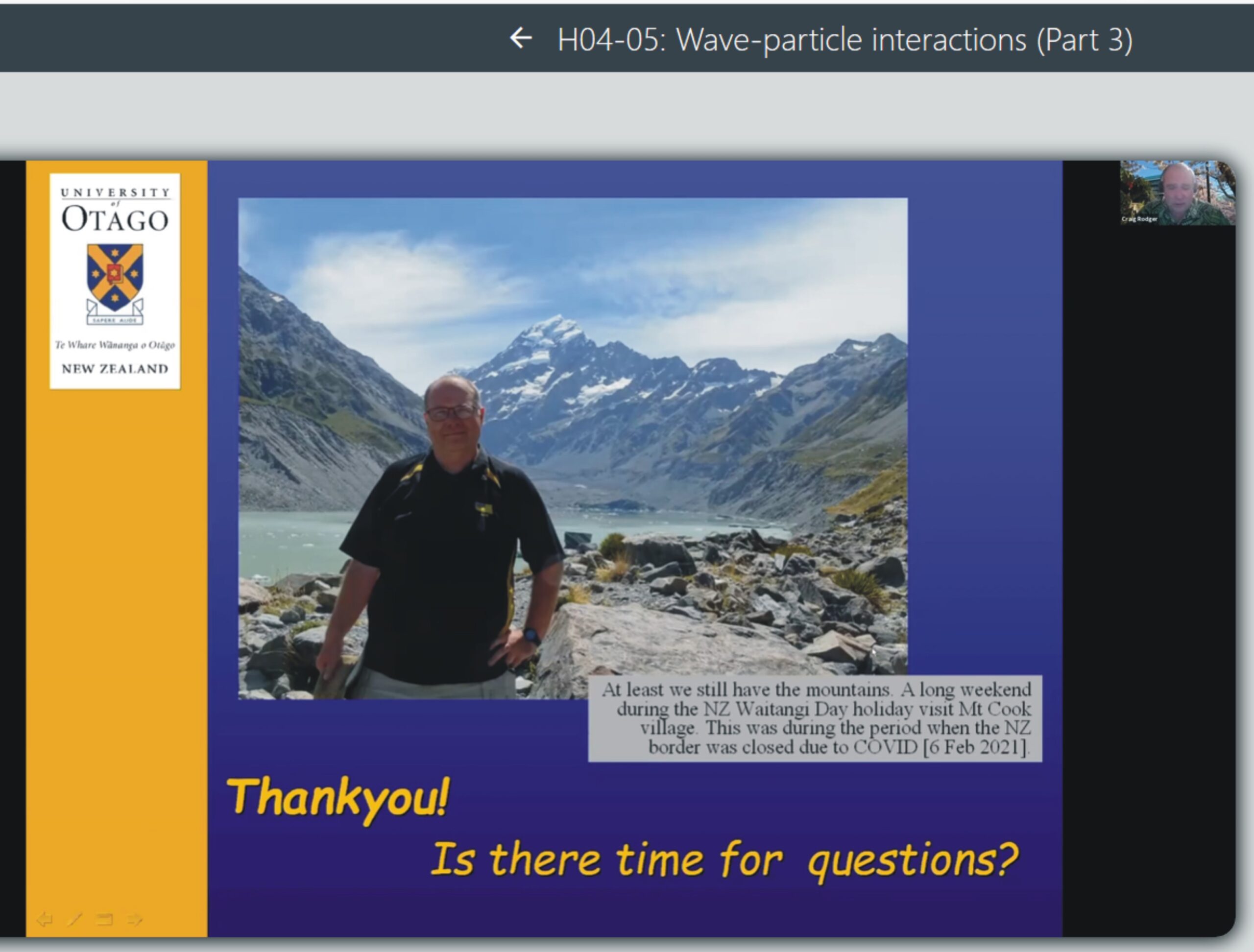 |
| In 2021 the Scientific Committee on Solar-Terrestrial Physics (SCOSTEP) launched a set of online lectures for capacity building of students and young scientists across the world. These online lectures are being provided to compensate for the travel restrictions from COVID-19 and provide both basic background and an introduction to the latest scientific topics of solar-terrestrial physics. In August 2021 Craig Rodger was the presenter leading the 7th SCOSTEP CBL. New Zealand moved into hard (“Level 4”) lockdown to avoid a COVID outbreak the day beforehand, so Craig gave the presentation by zoom from his kitchen. The movie is available online. The initial live talk was on 19 August 2021, with the movie going online a few days later. | 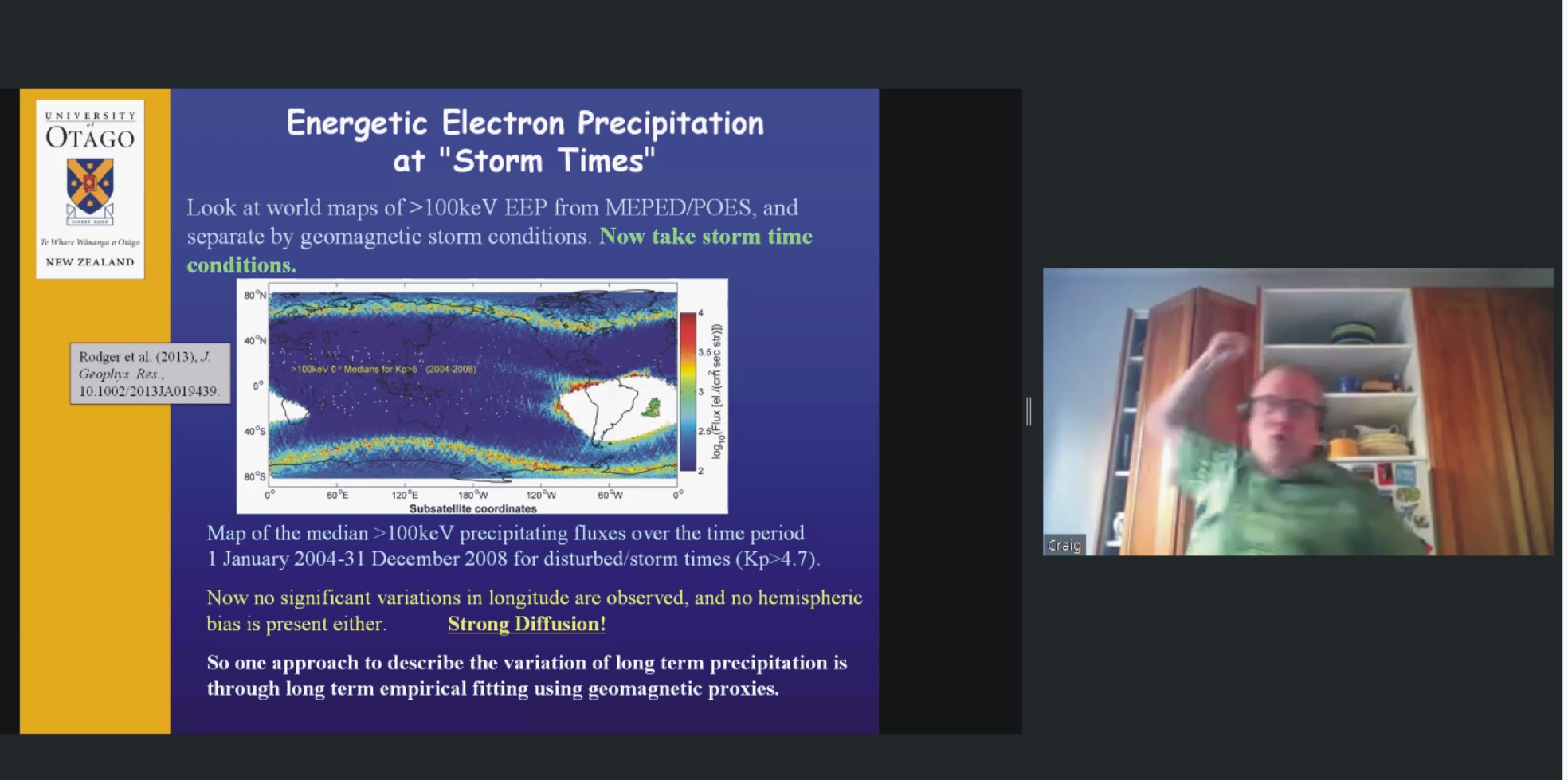 |
| Due to the impact of COVID-19 travel in and out of New Zealand has been severely restricted. Many conferences have run in an “all virtual” mode, although some are apparently blended. In August 2021 the Asia-Oceania Geosciences Society had their annual conference (AOGS 2021) as a virtual meeting. Aaron Hendry “attended” the meeting – he had two online oral presentations. One of these was an invited talk (ST02-A021 on EMIC impacts on the radiation belts). The other was a contributed oral (ST17-A010 on our GIC-focused Space Weather research programme). This picture comes from Aaron’s invited talk on 5 August 2021. | 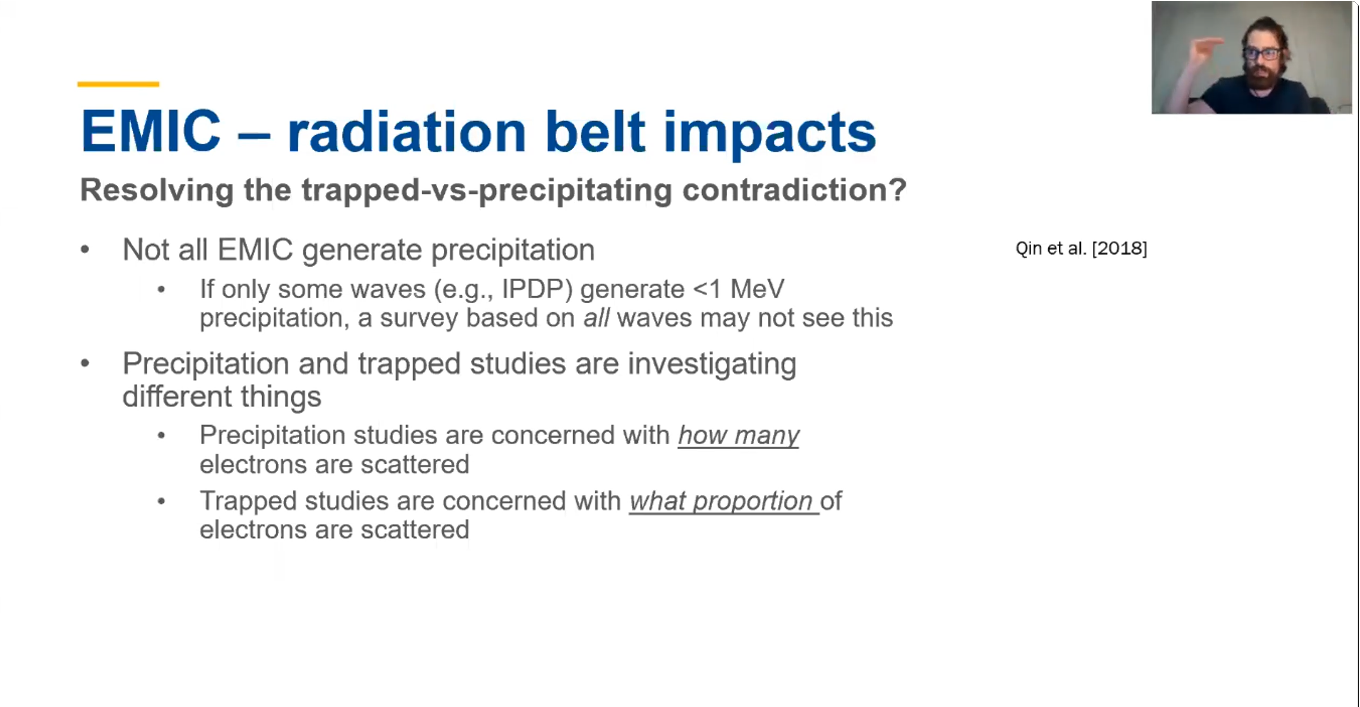 |
| The Otago Space Physics Group updated our team picture on 30 July 2021. Shown in the photo from left to right: Ryan Davis, Daniel Mac Manus, Annika Seppälä, Zade Johnston, Chris Hill, Aaron Hendry, Romain Meyrand, Neil Thomson, Keeta Chapman-Smith, Craig Rodger, Anna Tarr, Jono Squire, Malcolm Crack, and Sam Belcher. Unfortunately, James Brundell had a prior commitment and could not attend the photo this year. | 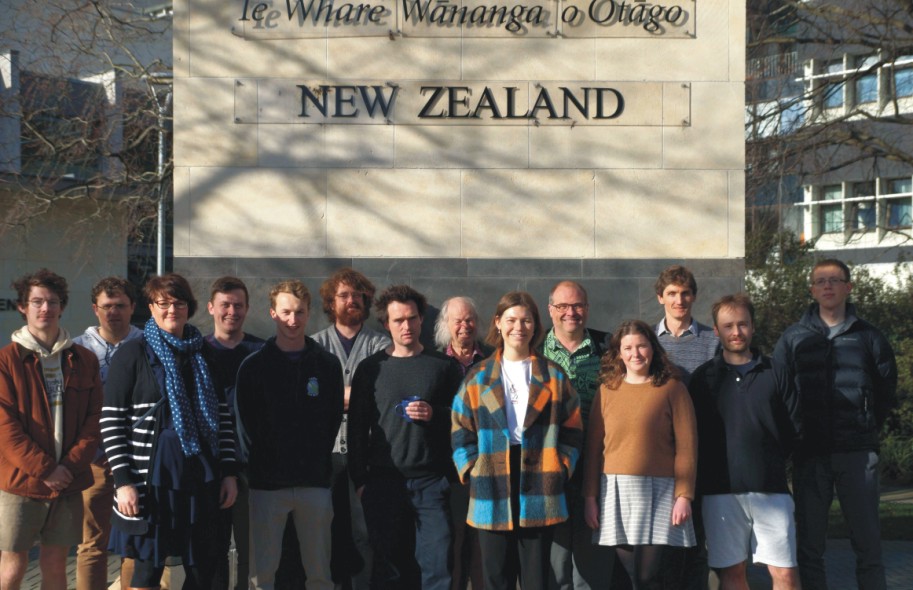 |
| Daniel Mac Manus and Craig Rodger travelled to Wellington in early July to attend the New Zealand Institute of Physics conference (NZIP & PHYSIKOS 2021 Conference). Daniel and Craig stayed in Wellington to talk to Transpower and visit VUW. Craig also visted MBIE to talk about our MBIE-funded Space Weather research. The image was taken in Te Marae within Te Papa (the Museum of New Zealand). The NZIP conference dinner was hosted at Te Marae. We were in Wellington from 12-16 July 2021. | 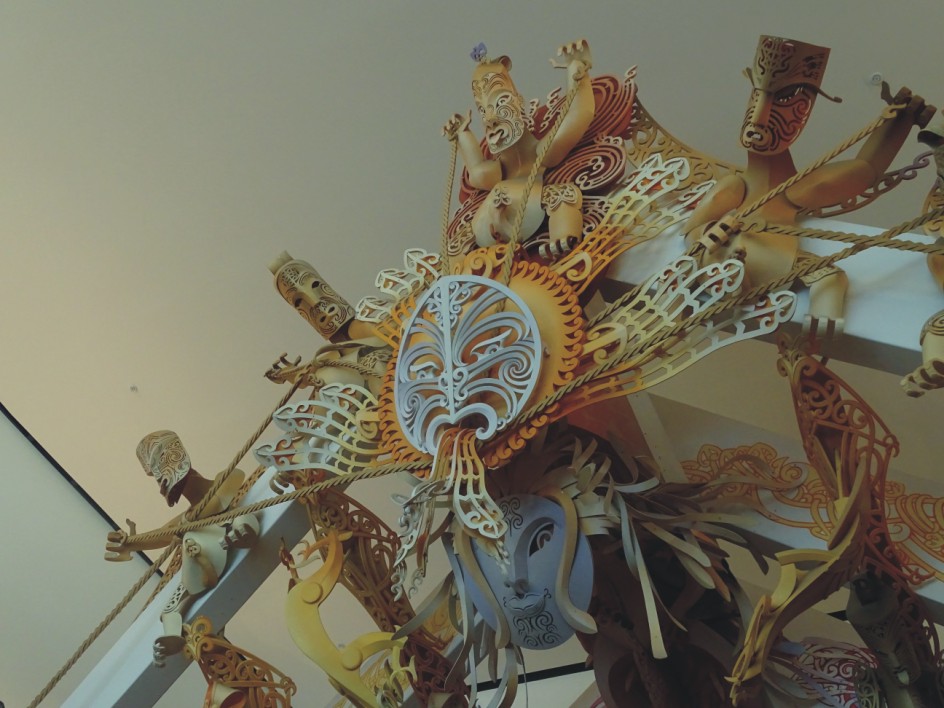 |
| During the 2021 virtual European Geosciences Union Meeting (vEGU2021, 19-30 April 2021) Craig Rodger was part of a special aimed at early career scientists. Craig joined 3 other speakers for a session called: Meet the Experts: The future of solar terrestrial research to talk about his research field, his career, and to answer questions from the community [23 April 2021]. The 2021 EGU meeting was entirely online due to COVID-19. | 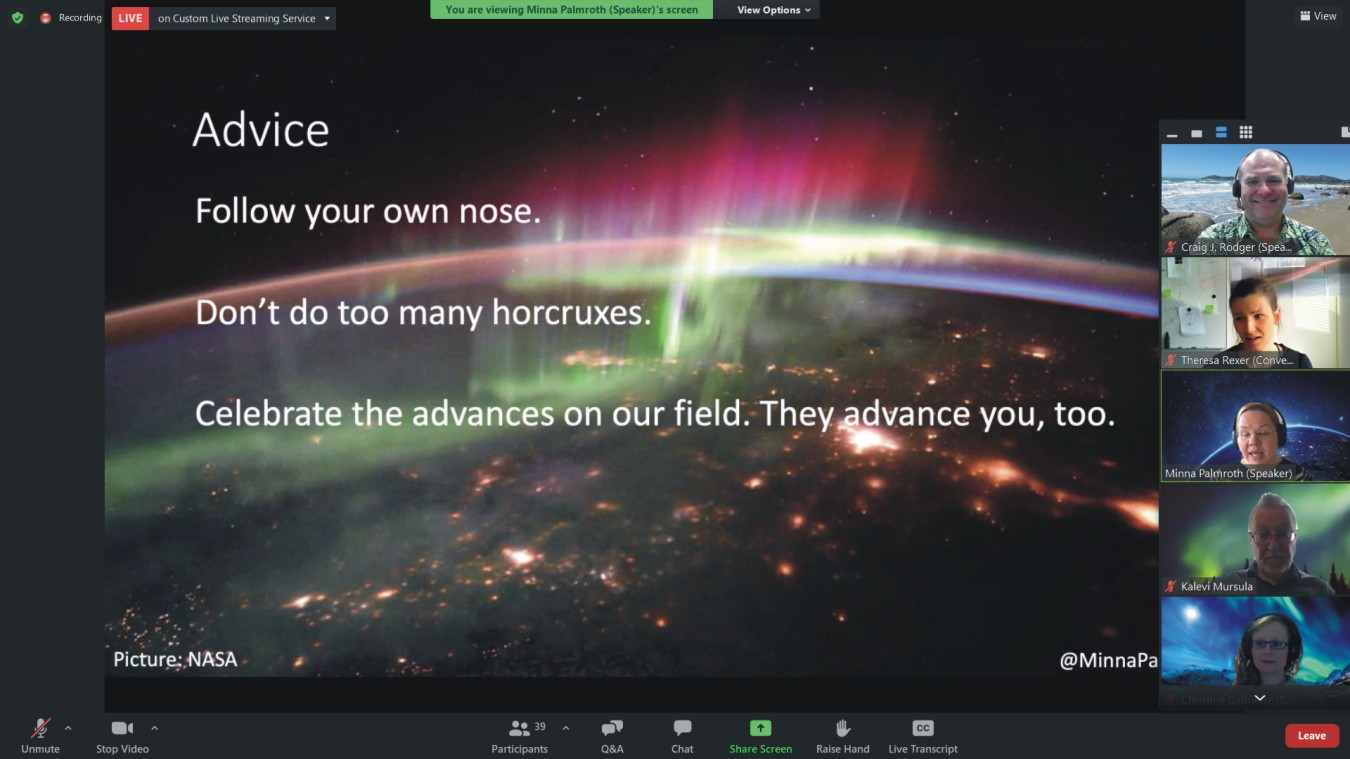 |
| Dr. James Brundell and Dr. Aaron Hendry undertaking a ELF/VLF magnetic field noise survey near New Zealand’s primary magnetic field observatory at Eyrewell. The loop antenna was used to make the ELF/VLF observations, the magnetometer itself is not show. The Eyrewell magnetometer is operated by GNS Science, who also maintain and run a magnetometer near Scott Base in Antarctica. We undertook these noise measurements as part of the planning for the Scott Base rebuild, as the magnetometer near Scott Base may need to be moved [31 March 2021]. | 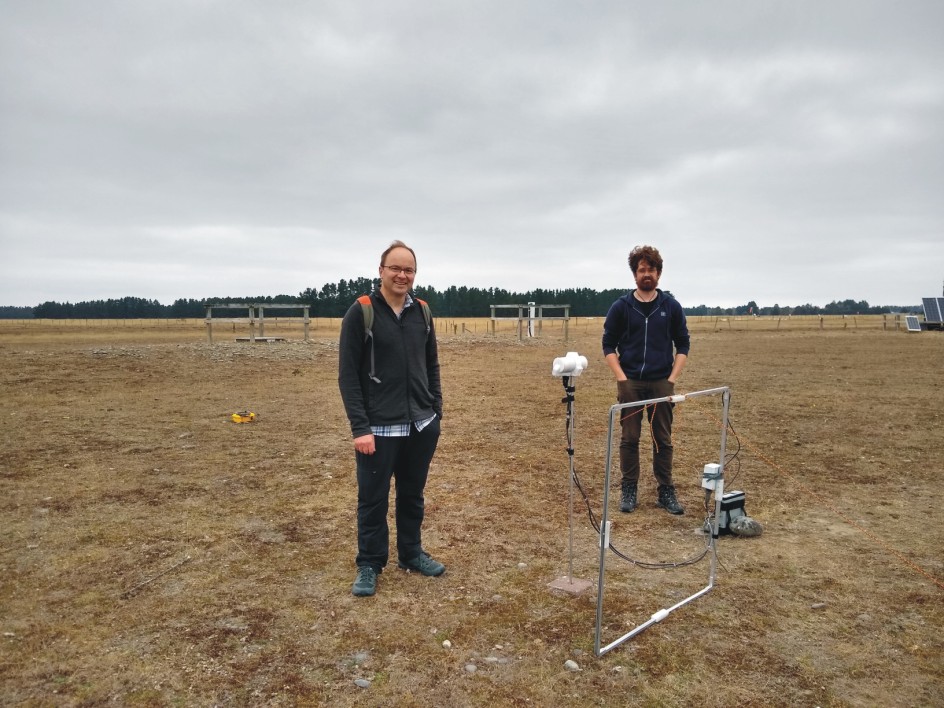 |
| During the Equinox Craig Rodger was invited to join the 3rd “Flight to the Lights”, flying on an Air New Zealand 787 south from Christchurch to the auroral oval. This years flights were organised by Viva Expeditions, who ran two “sold out” flights on 20-21 May 2021. Craig flew on the second of these two flights to answer questions from the passengers about the aurora and space weather in general. We were very lucky that a geomagnetic storm kicked off just as the first flight took off, with Kp values of 4-5 during both flights. There was a lot of aurora visible, and the trips generation multiple media stories (example 1, example 2). This image was taken by astrophotographer Brad Phipps [21 May 2021]. | 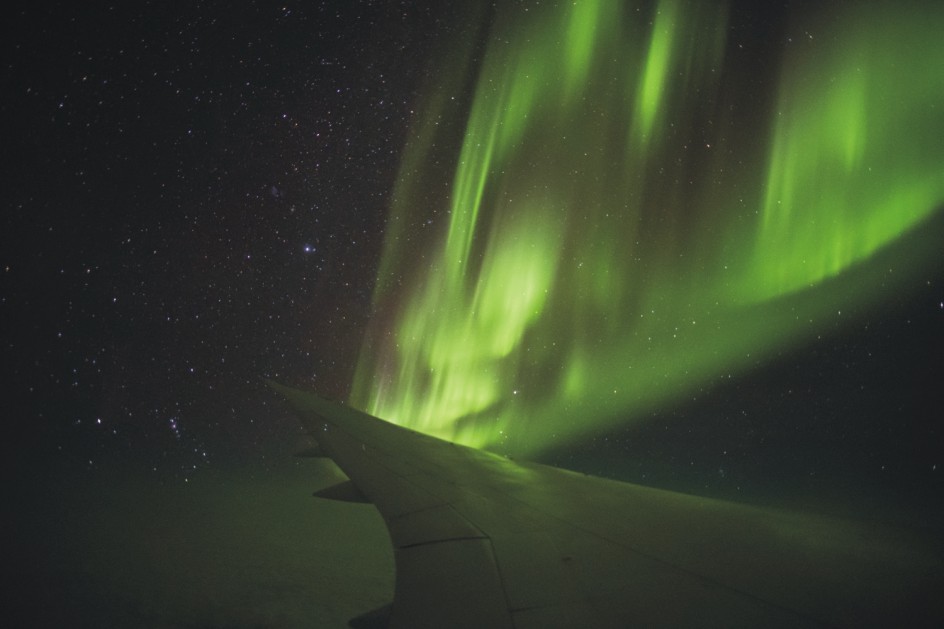 |
| The New Zealand Antarctic Science Conference was held at Canterbury University in February 2021. The Space Physics group joined a large set of Otago University staff and students who travelled to Christchurch to participate. Annika Seppälä presented a poster on atmospheric dynamics on 10-11 February 2021. Viktoria Nordstrom also gave a poster on her MSc research on Antarctic stratospheric warming – but we failed he get a photo of her with her poster. | 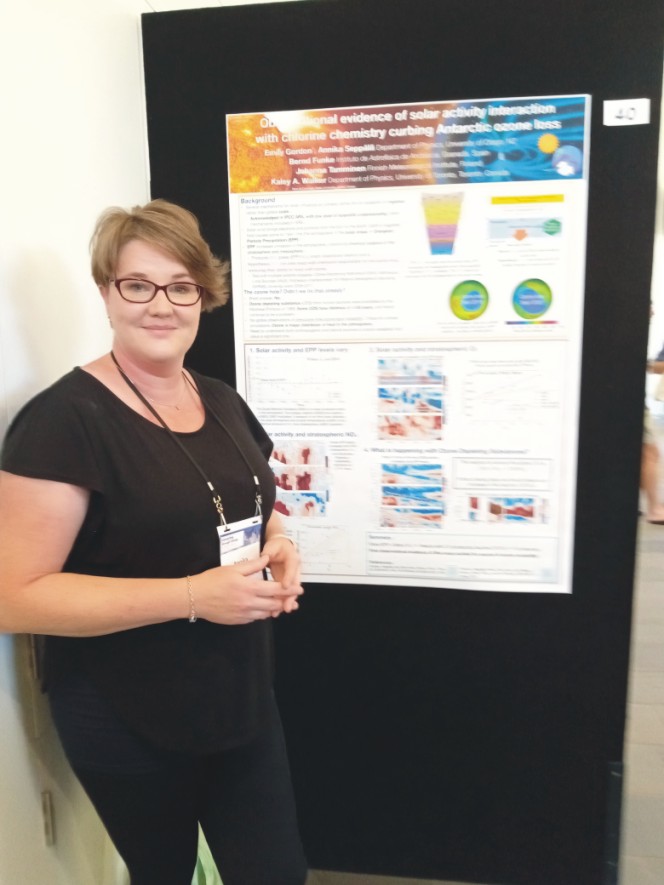 |
| The New Zealand Antarctic Science Conference was held at Canterbury University in February 2021. The Space Physics group joined a large set of Otago University staff and students who travelled to Christchurch to participate. James Brundell presented a poster on our aurora alerting system on 10-11 February 2021. Craig Rodger also gave a lightning talk on 11 February 20-21. | 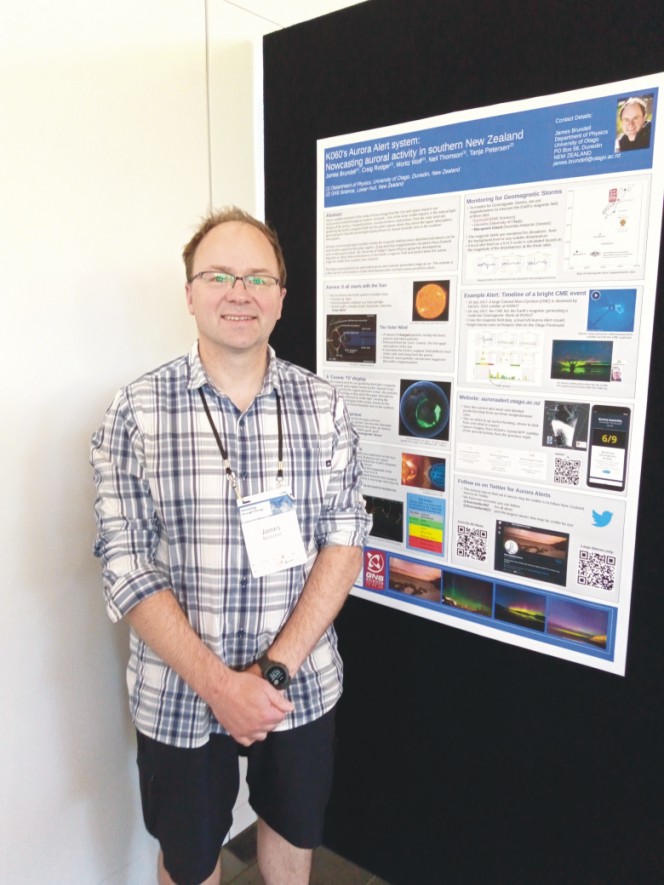 |
| At the start of February we hosted the “kick off” meeting for the Solar Tsunamis: Space-Weather Prediction and Risk Mitigation for New Zealand’s Energy Infrastructure research programme, funded by MBIE through the Endeavour Fund. This programme will investigates how solar explosions impact New Zealand energy networks, with our main focus on the electrical power network and natural gas pipelines. The picture below shows most of “in person” meeting participants. From left to right: Ted Bertrand (GNS), Anna Tarr (Otago Univ Physics), Wiebke Heise (GNS), Tanja Petersen (GNS), Matt Parry (Otago Maths & Statistics), Ting Wang (Otago Maths & Statistics), Neville Watson (Canterbury University), Fernanda da Silva Tatley (Otago University Research Office), Mike Dalzell (Transpower), Pam Scowen (GNS), Craig Grant (Otago Museum), Craig Rodger (Otago Univ Physics), Jessa Barder (Otago Museum), Daniel Mac Manus (Otago Univ Physics), Malcolm Ingham (VUW), Aaron Hendry (Otago Univ Physics), James Brundell (Otago Univ Physics), Stewart Hardie (Canterbury University). Unfortunately, Andrew Lapthorn (Canterbury University) missed the photo. | 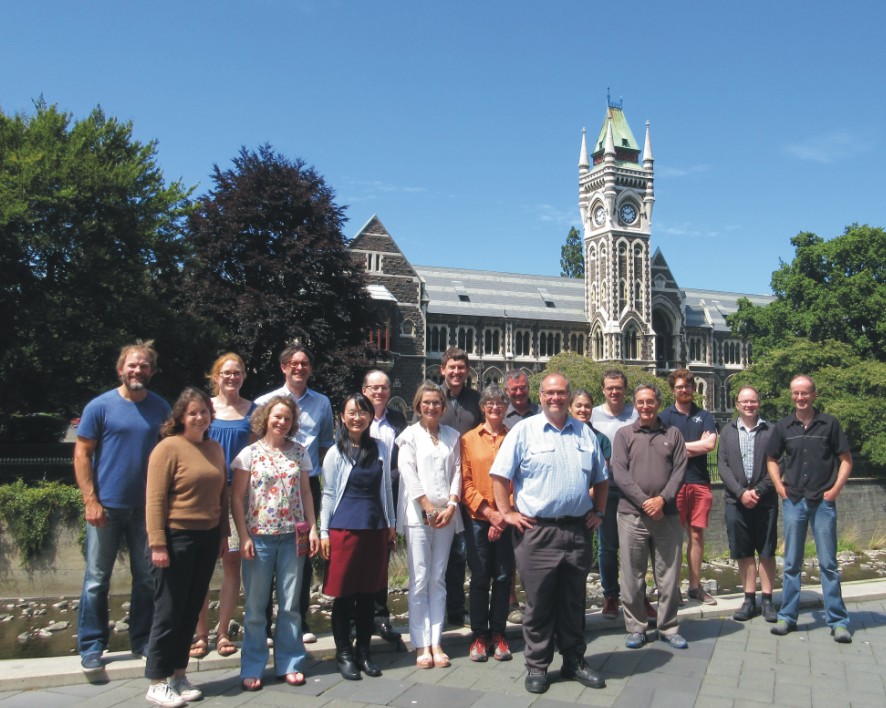 |
| The Fall Meeting of the American Geophysical Union is normally the largest geoscience conference on Earth – but the 2020 meeting was impacted by COVID, and ended up happening online and not in San Francisco. On the plus side, Craig was able to accept an invitation to present at the meeting, and be part of a Space Weather panel discussion as well. A screen shot was taken during his overview comments. Over 100 people participated in the online session [8 Dec 2020]. | 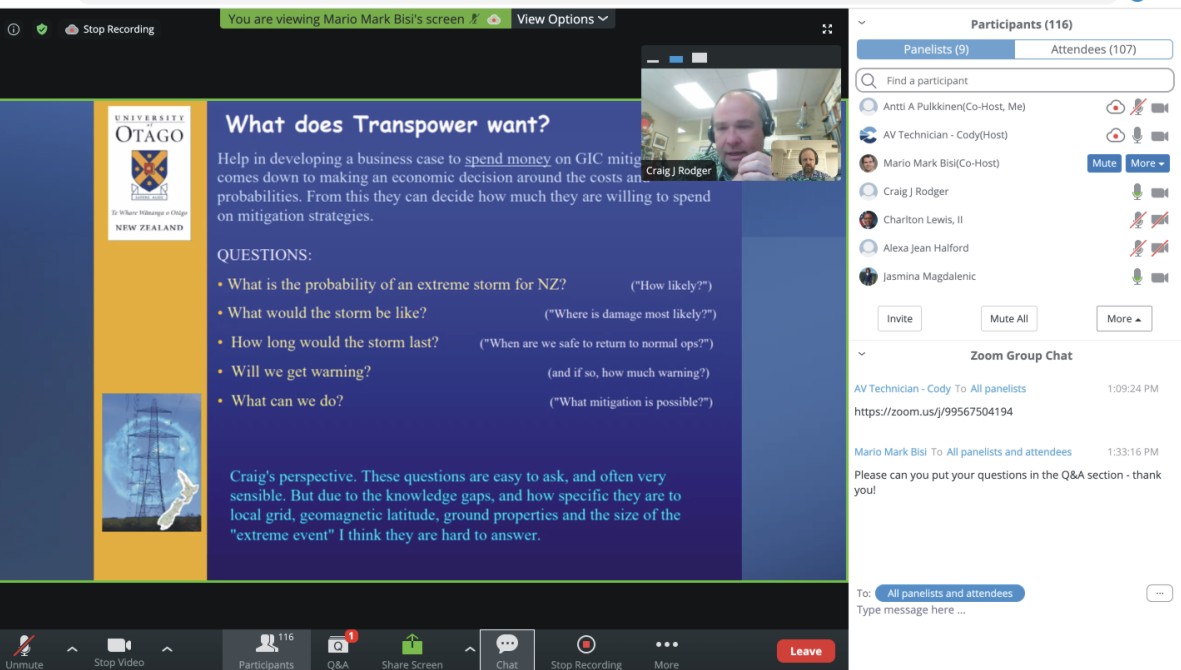 |
| This year has meant much fewer travel opportunities – but not none. In late November Craig travelled to New Plymouth to meet with engineers from First Gas Ltd, and to talk about space weather and pipelines. On the way back south Air New Zealand flight NZ8793 flew around Mt Taranaki, providing some amazing views (28 Nov 2020). | 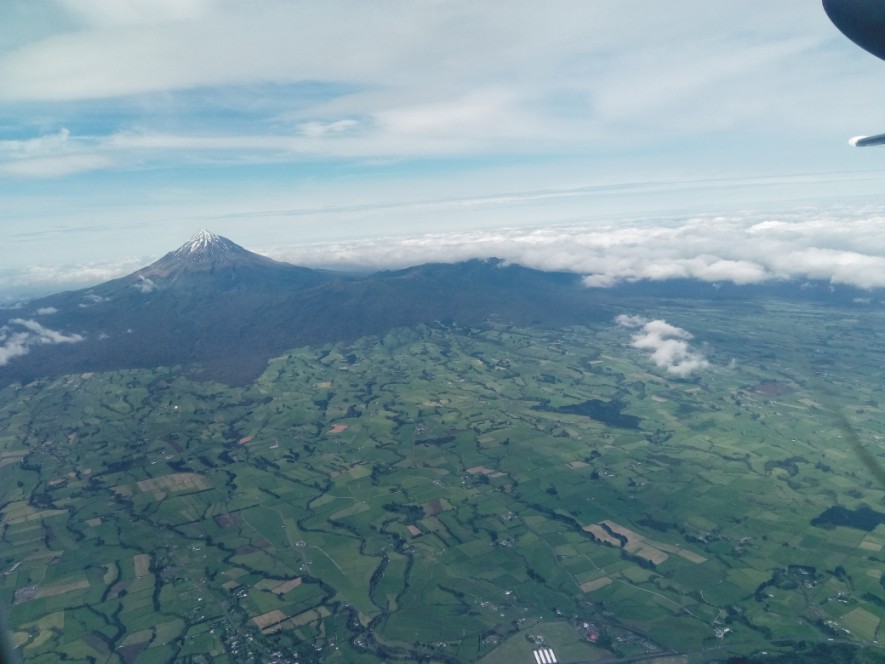 |
| In early 2020 the VERSIM community was to meet in Kyoto, Japan, for the 9th VERSIM Workshop in March of that year. We had hoped to join as a community, and appreciate the cherry blossom as well as the hospitality of our Japanese colleagues. This was disrupted by COVID-19, and after much consideration the meeting was changed into a virtual workshop that ran in mid-November 2020. The Otago Space Physics group have always been strongly involved in VERSIM, attending the first workshop in 2004, and hosting the 6th workshop in Dunedin in 2014. Craig was invited to speak at the workshop, and also chaired several sessions. This screen shot comes from the start of the VERSIM meeting, shortly before the opening on 16 November 2020. Visible from left to right, top and then bottom are: Jacob Bortnik (UCLA), Yoshi Omura (Kyoto U), Craig Rodger, Richard Horne (BAS), and Peter Bespalov (IAP). | 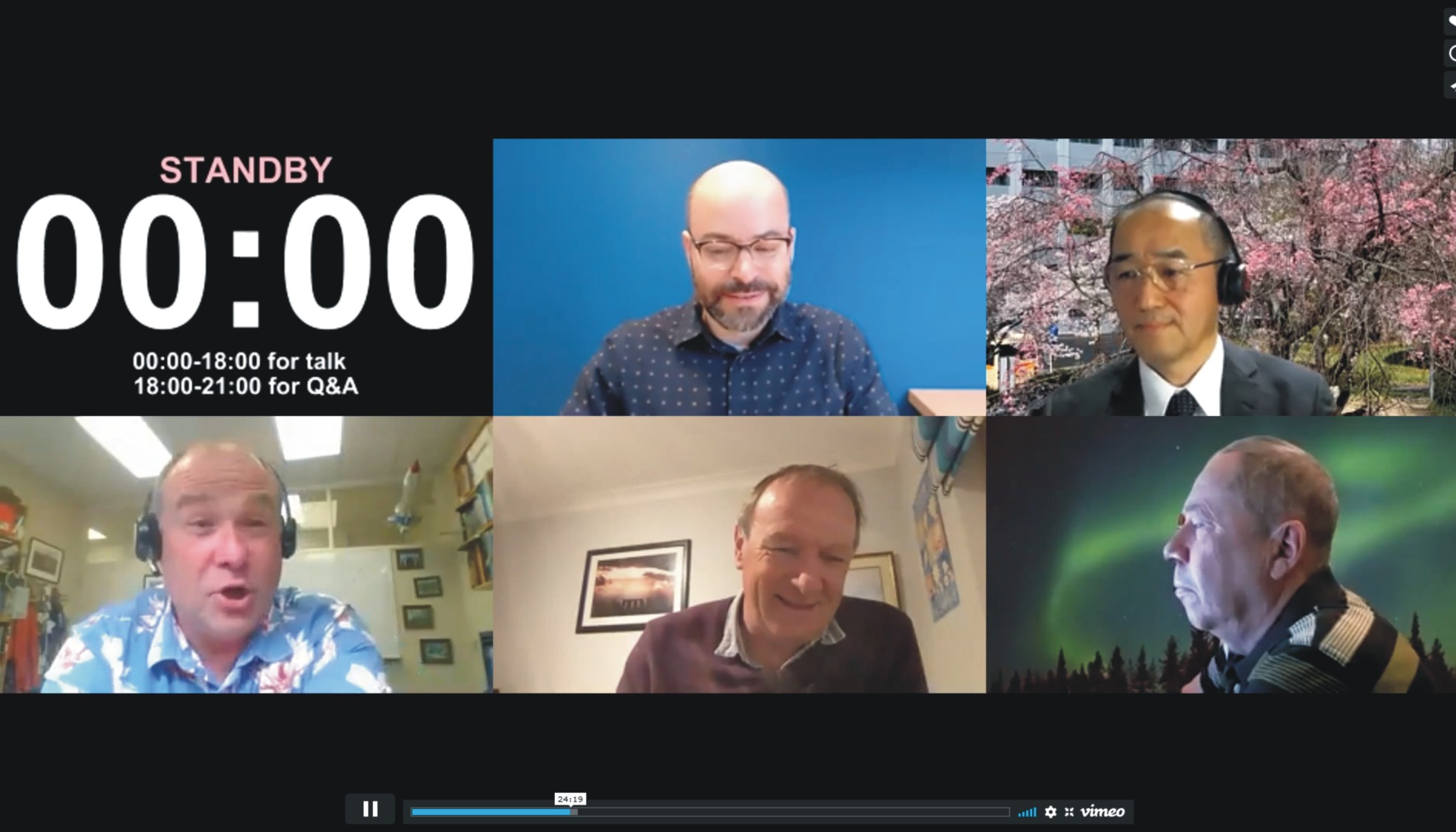 |
| In early 2020 the VERSIM community was to meet in Kyoto, Japan, for the 9th VERSIM Workshop in March of that year. We had hoped to join as a community, and appreciate the cherry blossom as well as the hospitality of our Japanese colleagues. This was disrupted by COVID-19, and after much consideration the meeting was changed into a virtual workshop that ran in mid-November 2020. Space Physics postdoc Aaron Hendry presented a poster at the workshop – he had originally submitted the poster abstract when he was based at the Institute of Atmospheric Physics in Prague, Czechia. When the virtual workshop occurred he was working in Dunedin, again. This screen shot comes from the online poster session on 17 November 2020. | 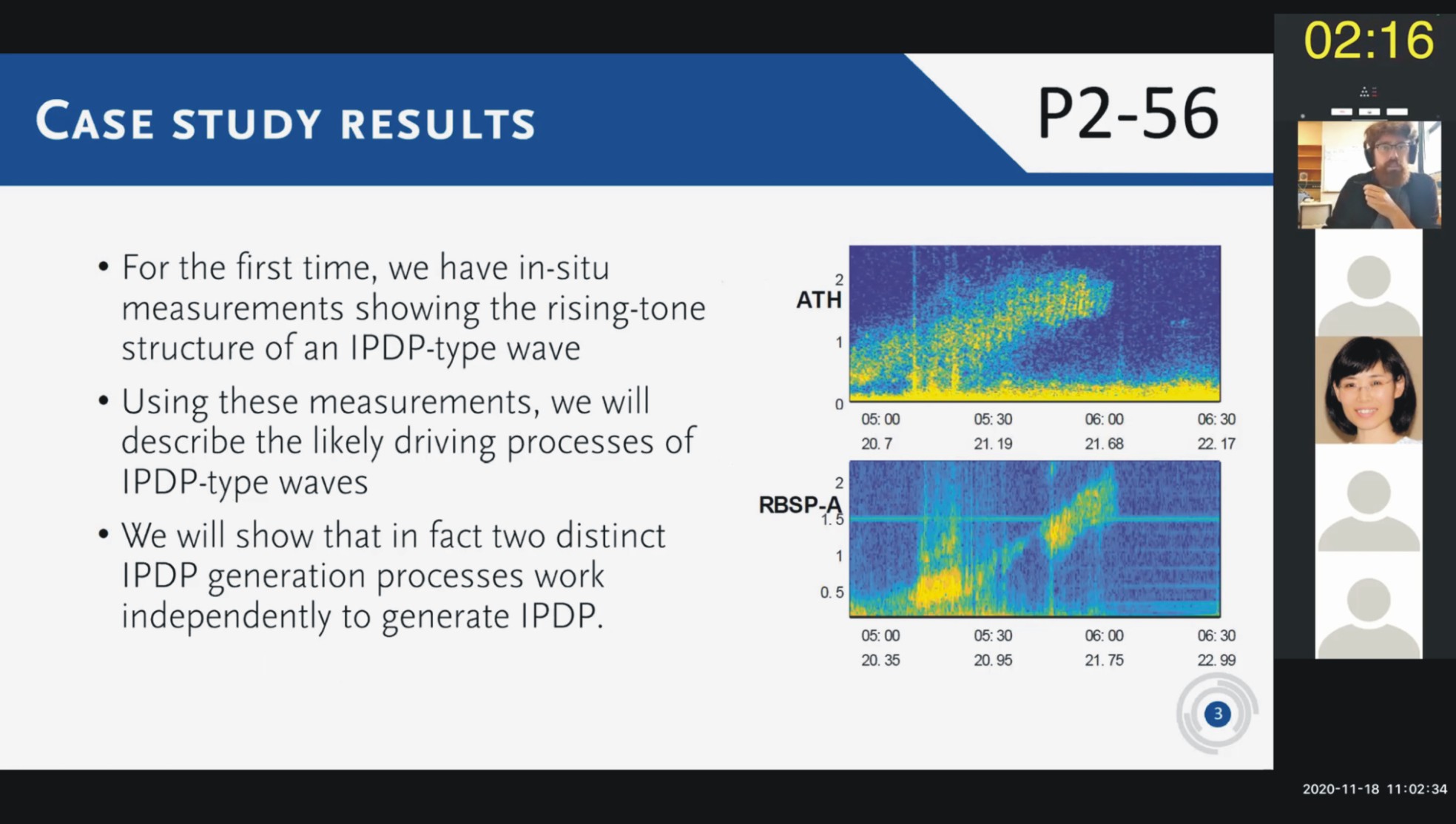 |
| The Otago Space Physics Group updated our team picture on 31 July 2020. Shown in the photo from left to right: Craig Rodger, Daniel Mac Manus, Emily Gordon, Keeta Chapman-Smith, Romain Meyrand, Jono Squire, Neil Thomson, Annika Seppälä, Viktoria Nordstrom, Aaron Hendry, Zade Johnston, and Ryan Davis. Unfortunately two groups members were unable to join us: James Brundell and Sam Belcher. | 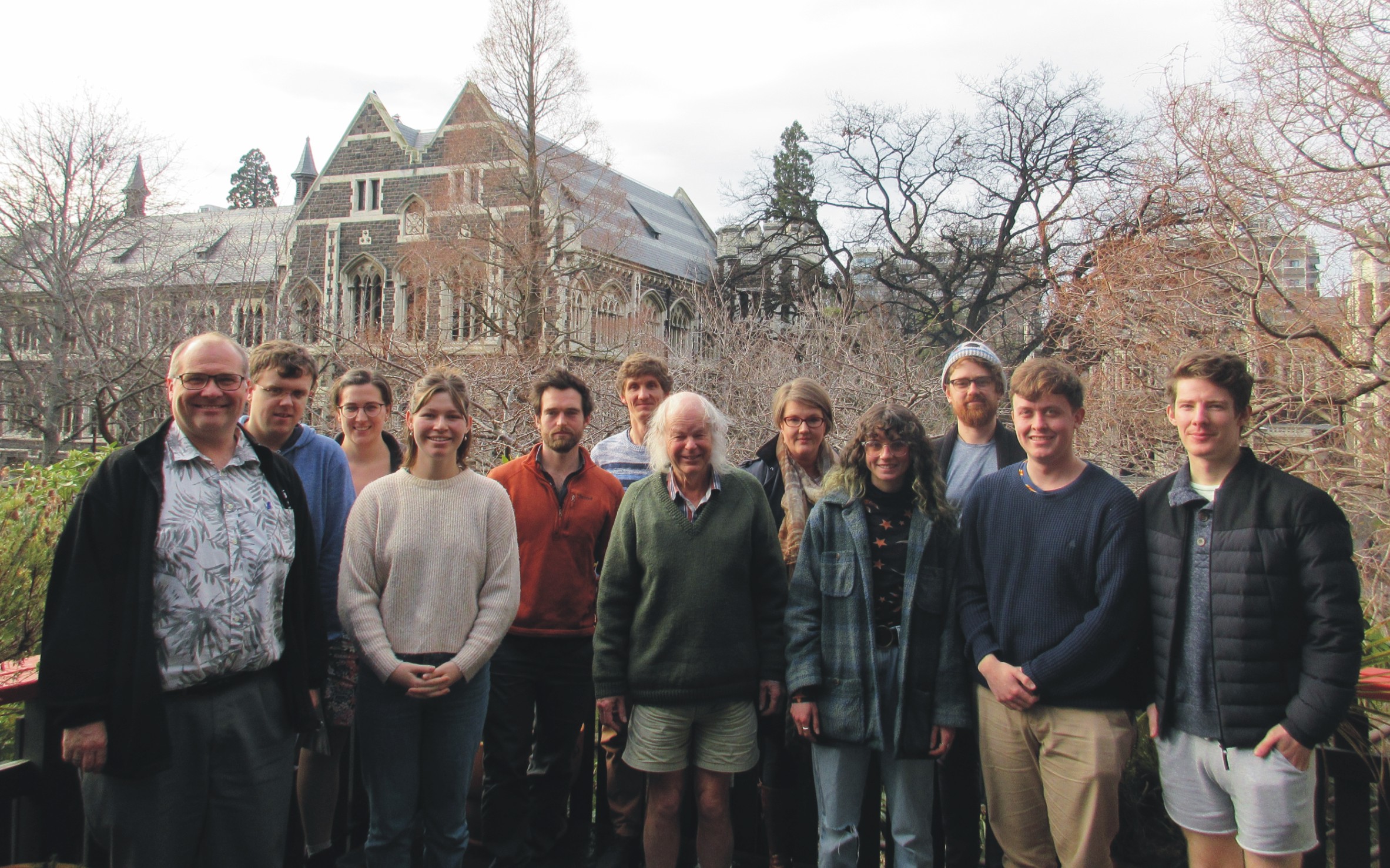 |
| After New Zealand shifted to COVID-19 alert level 1 on Tuesday 9 June 2020, our weekly Space Physics coffee sessions could resume in the real and without social distancing. We returned to the Staff Club on the morning of Friday 12 June 2020. From the left side of the table going clockwise: Emily Gordon, Annika Seppala, Daniel Mac Manus, James Brundell, Neil Thomson, Craig Rodger, Aaron Hendry, Romain Meyrand, Jono Squire and Keeta Chapman-Smith (12 June 2020). | 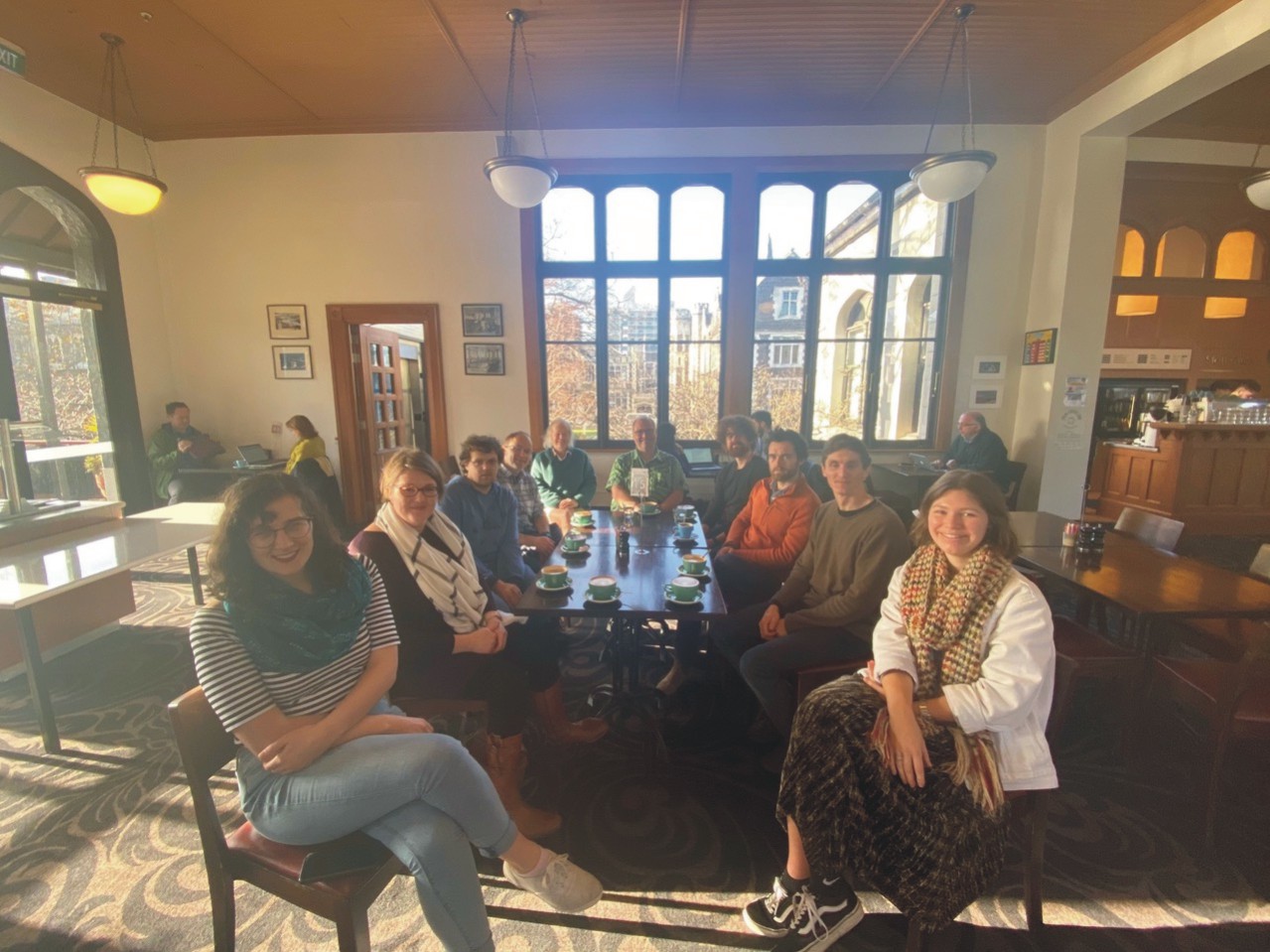 |
| Mark Clilverd (British Antarctic Survey) travelled to Dunedin once again in late January 2020, for a two week stay. During his time with us, we drafted a new paper on GIC studies, and worked on two major funding proposals. On Waitangi Day we explored the Otago Peninsula, driving up to Taiaroa Head to admire the views. We also saw a couple of Royal Albatros flying around (6 February 2020). | 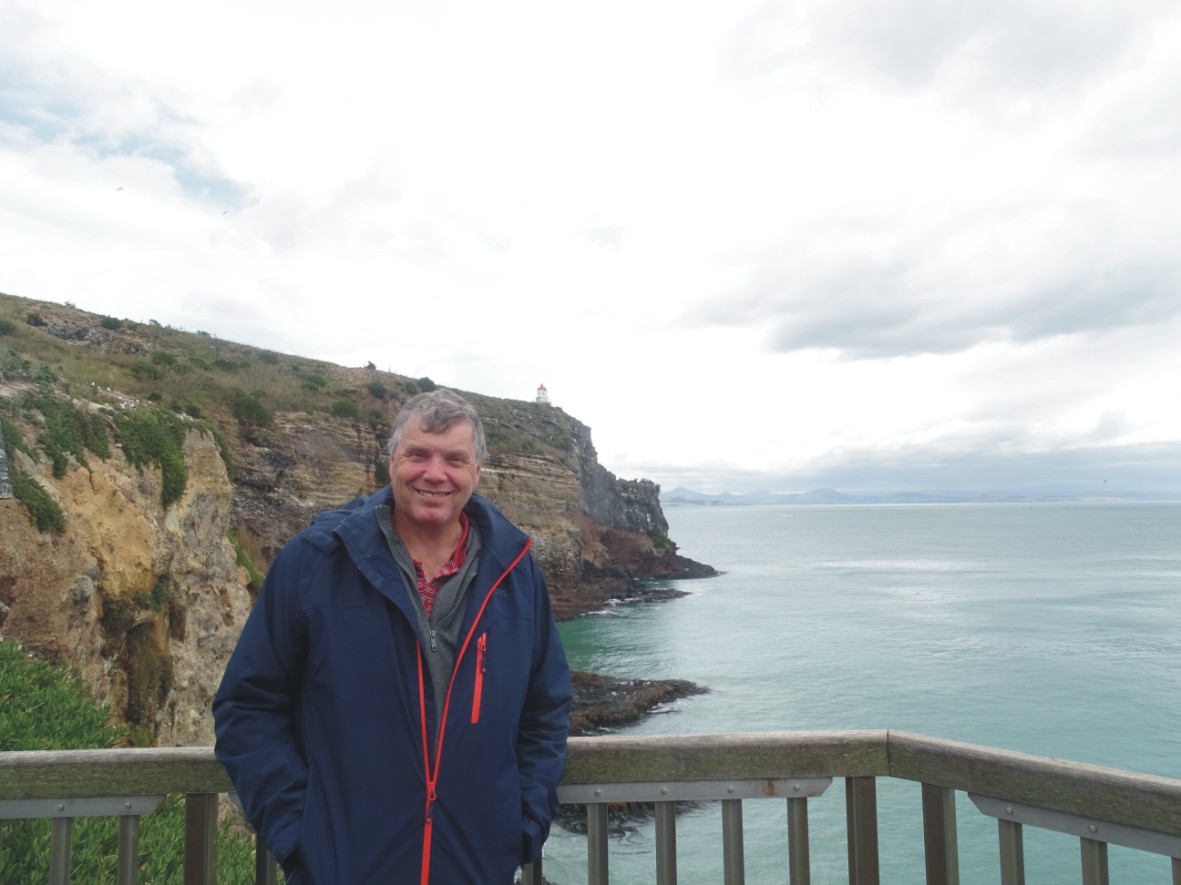 |
What to see more images? Look at our current images, images from images from 2018-2019, images from 2016-2017, images from 2014-2015, images from 2012-2013, images from 2010-2011, images from 2008-2009, images from 2006-2007, images from 2004-2005, or the images from 1997-